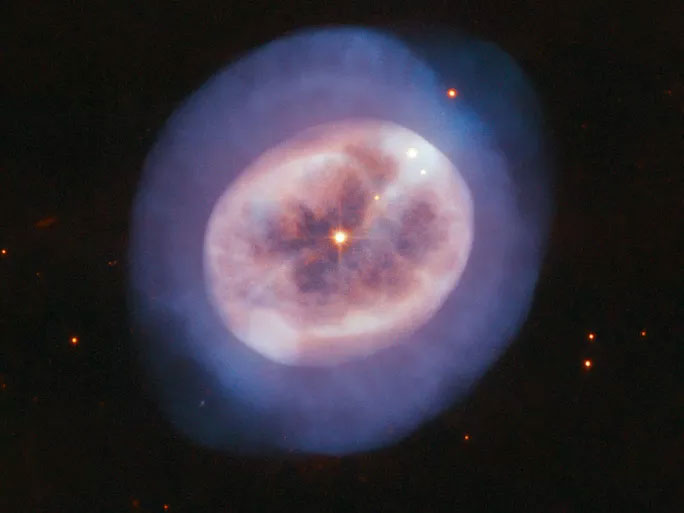Discovering the purple celestial body reveals the future of the Sun.
A giant and strange cosmic jellyfish was discovered by the Hubble space telescope, which according to NASA is the brilliant end of an old sun-like star.
NASA has just released a surprisingly close-up shot of a bright, mauve and almost transparent celestial body of the constellation Orion (also known as Hunter, the Vietnamese name for the Greek or Hunter). They are described by this space agency as "a cosmic jellyfish". Of course it is not a living creature. It is planetary NGC 2022 nebula .

What happens to NGC 2022 is our future sun - (photo: HUBBLE / NASA)
"Planetary Nebula" is an old term, although it is now known to be a false call but because it is familiar, it is still used in astronomical documents. NGC 2022 is actually a giant star like our sun but much older, already in one of its last evolutionary stages.
NGC 2022 is at the end of the process of converting hydrogen into helium in its core by nuclear fusion. Two types of light atoms have bonded or merged, creating a heavier new atom, until the star completely depleted the hydrogen in the core. Then gravity forces the star to shrink, so that the temperature rises. Meanwhile, helium is qualified for temperature and pressure to merge with carbon. This process made the star expand into a "red giant".
Then, the "red giant" separates its outer layers of air, launching space and forming a beautiful purple object that the Hubble Space Telescope observes. "More than half the mass of a star can be poured into space in this way, forming a" shell "of gas, while the star shrinks and gets hotter, emitting ultraviolet rays causing glowing gases " , Hubble explained.
The core of the old star lies in the center of the "planetary nebula" , brightly lit with orange yellow; while its radiation illuminates the surrounding gas clouds with pink and purple shades.
This object may be the future of our Sun. Estimating the sun was 4.5 billion years old, was in the middle of converting hydrogen into helium. The Sun's conclusion - and possibly the whole earth - could happen in about 4.5 billion years.
- Overview of Uranus
- Discover the largest celestial object cluster in the universe
- Celestial Body P / 2010 A2 is just a fake star
- For the first time, identify an object from outside the Solar System
- Philippines: The sky suddenly turned purple like the end of the world
- Discover the most distant object in the Solar System
- Very few countries have purple flags and the truth is this
- Discovering two strange celestial bodies
- Legendary legend about people with purple eyes
- How many celestial objects are threatening the Earth?
- Minor Pluto - The celestial body farthest from the solar system
- Video: Detect the purple ink breaking like a toy
 Van Allen's belt and evidence that the Apollo 11 mission to the Moon was myth
Van Allen's belt and evidence that the Apollo 11 mission to the Moon was myth The levels of civilization in the universe (Kardashev scale)
The levels of civilization in the universe (Kardashev scale) Today Mars, the sun and the Earth are aligned
Today Mars, the sun and the Earth are aligned The Amazon owner announced a secret plan to build a space base for thousands of people
The Amazon owner announced a secret plan to build a space base for thousands of people